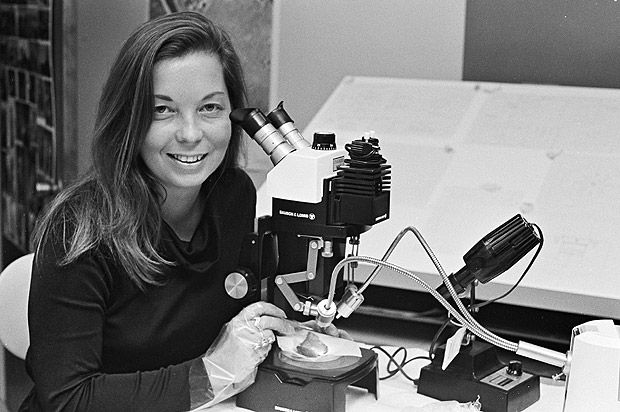 Glory Days
Glory Days
The Space Program’s Exciting Birth – And Meeting Our Current STEM Needs
The National Science Board's noting of the "troubling decline" in American students studying science and engineering makes me remember a very different time when there was a burgeoning of student interest in these fields– namely the post-Sputnik era of the 1960s. National pride, wounded by the Russian success in "beating us into space," drove the space race. And President John F. Kennedy in 1961 announced the breathtaking goal of landing on the moon within the decade – successfully met due to the infusion of national resources in science, math and engineering programs.
It was an exciting time for those of us already interested in these fields and encouraged by future job prospects.
I was recruited in graduate school to study the very first samples returned from the moon by the Apollo 11 astronauts in 1969. The idea that these rocks could provide insight into the formation and evolution of the moon and the solar system; that they could allow us to look back in time at solar and galactic cosmic ray activity; that they could yield clues as to the formation of the other rocky bodies in our solar system; that was pretty heady stuff! And I was hooked.
The return of lunar samples made it possible to ask new questions and required us to think in new ways – to devise new experiments and new experimental approaches and techniques. I can remember amazing collaborative and interdisciplinary efforts, working several days at a time, with only an average of three or four hours sleep per night.
In collaborating with a Caltech colleague in my postdoctoral work, a particularly interesting challenge was to design and build an experiment that went to the moon on Apollo 17. I was still analyzing this experiment when I joined the Cal State Fullerton faculty in 1973.
It was involving CSUF students in this and future experiments that kept me committed to the happy marriage of teaching and research until my retirement.
NASA continues to support my research. I am doing theoretical and experimental work in support of the space mission Genesis, dedicated to determining the elemental and isotopic composition of our sun, which represents the starting material of our solar system. We started planning for this mission in 1993. It was launched and spent between 2001 and 2004 at the Earth-Sun L1 Lagrangian point about 1 million miles from Earth, passively collecting energetic particles ejected by the sun in a variety of ultra-pure collectors.
On returning, the spacecraft released a sample return capsule, which entered the Earth's atmosphere and made a heartbreaking hard landing as a result of a failed parachute deployment.
I was there for the return, and wound up spending the following few weeks retrieving, identifying and preliminarily cleaning the priceless shards from the Dugway, Utah, desert crash site.
It's been challenging to eke out the solar wind data from the collectors, but we have answered some important questions. Prior to Genesis, with the exception of isolated small isotopic anomalies found in some tiny inclusions in meteorites and some cosmic dust, the solar system appeared to have been formed from a cloud of gas and dust, called the solar nebula, that was homogeneous. The Genesis isotopic results for both oxygen and nitrogen suggest that the solar nebula was not homogeneous. The terrestrial planets, moon, meteorites and comets appear anomalous compared to the sun. This will require significant re-thinking of our models of solar-system formation.
Our national commitment to space missions has waned since the glory of the Apollo days. We are funding less-expensive missions like Genesis. This may be reasonable, given other pressing issues.
Globally, we have real problems in keeping up with our energy needs, in feeding the ever-increasing population of this planet, in better forecasting and ameliorating the effects of natural disasters, in preserving the delicate balance of our widely varied ecosystems. We must refine atmospheric models and improve our understanding of the measures needed to avoid a catastrophic global warming, and improve health and health care management.
From my perspective, our planet's health and our own health and prosperity makes it imperative that we educate more innovators and problem-solvers. We need a new national commitment to promoting STEM studies.
We now have a president who speaks to our problem-solving needs and to the value of promoting education – STEM education, in particular. In this economy, we also need to create jobs. What a happy conjunction! To paraphrase President Kennedy: Nothing will be more important… more difficult… more expensive. But all we need is the resolve and the commitment of resources to achieve our goals.
We can do it. And we can't afford not to! ![]()
 Dorothy Woolum, a CSUF faculty member from 1973-2001, is a professor emerita and former physics chair who has served on a number of NASA and National Science Foundation proposal review panels and NASA advisory boards.
Dorothy Woolum, a CSUF faculty member from 1973-2001, is a professor emerita and former physics chair who has served on a number of NASA and National Science Foundation proposal review panels and NASA advisory boards.